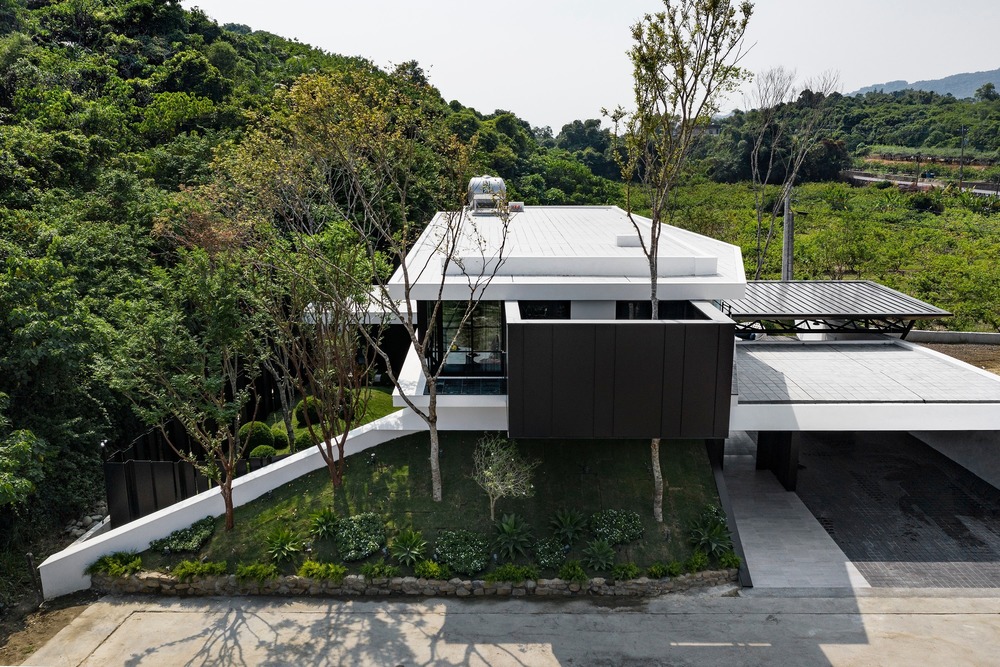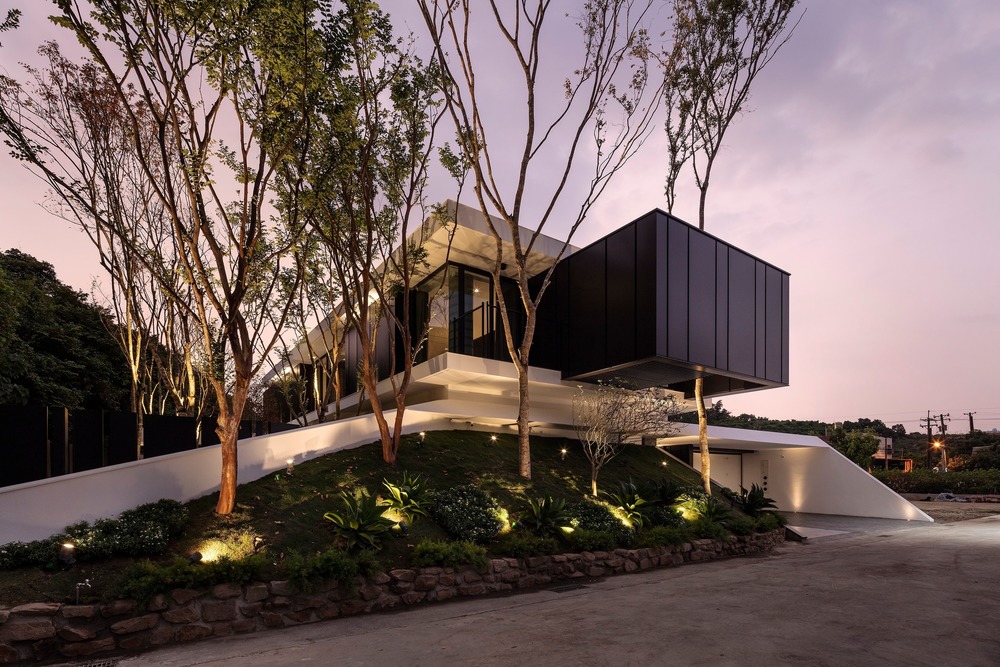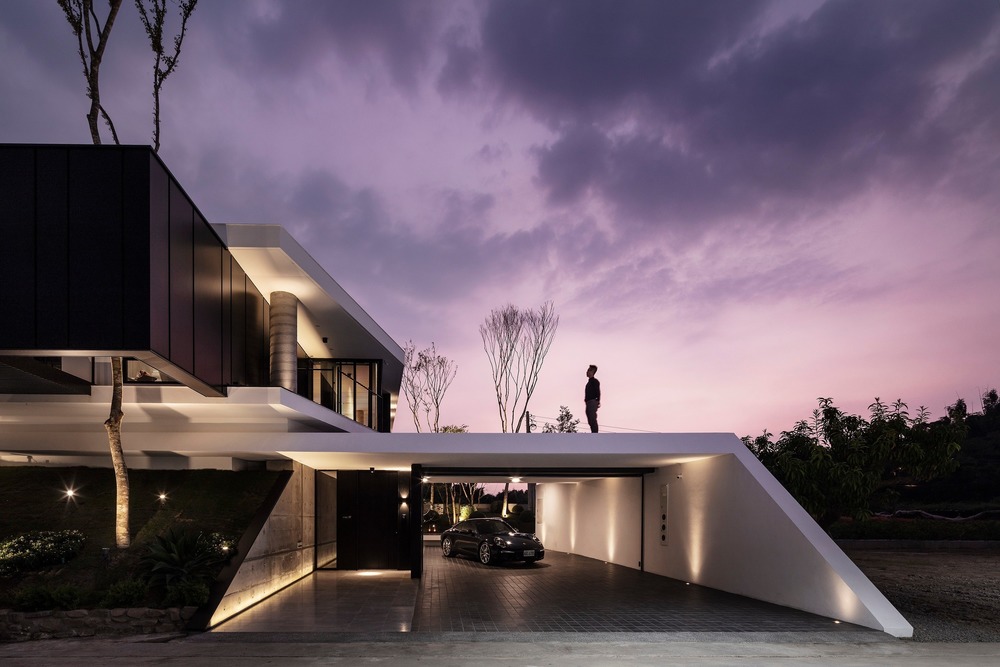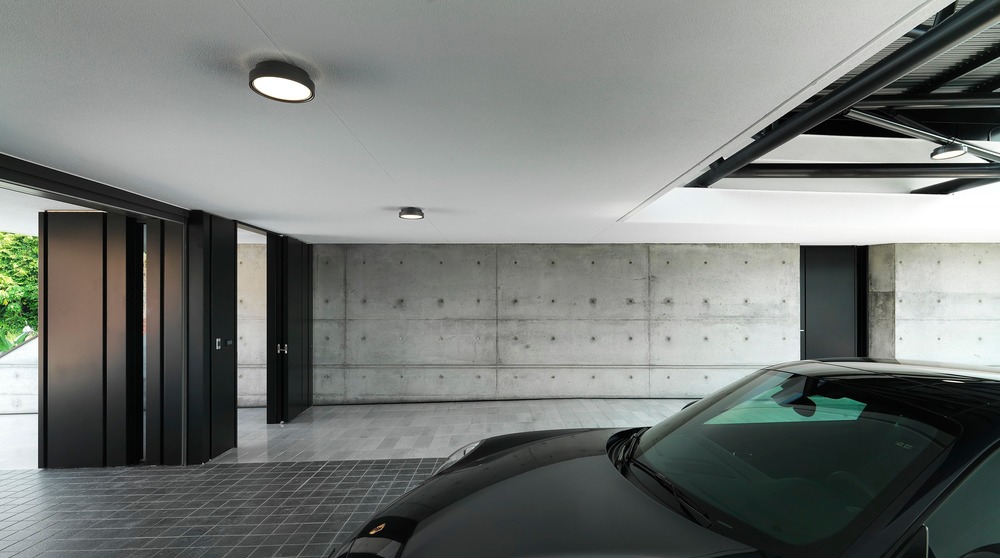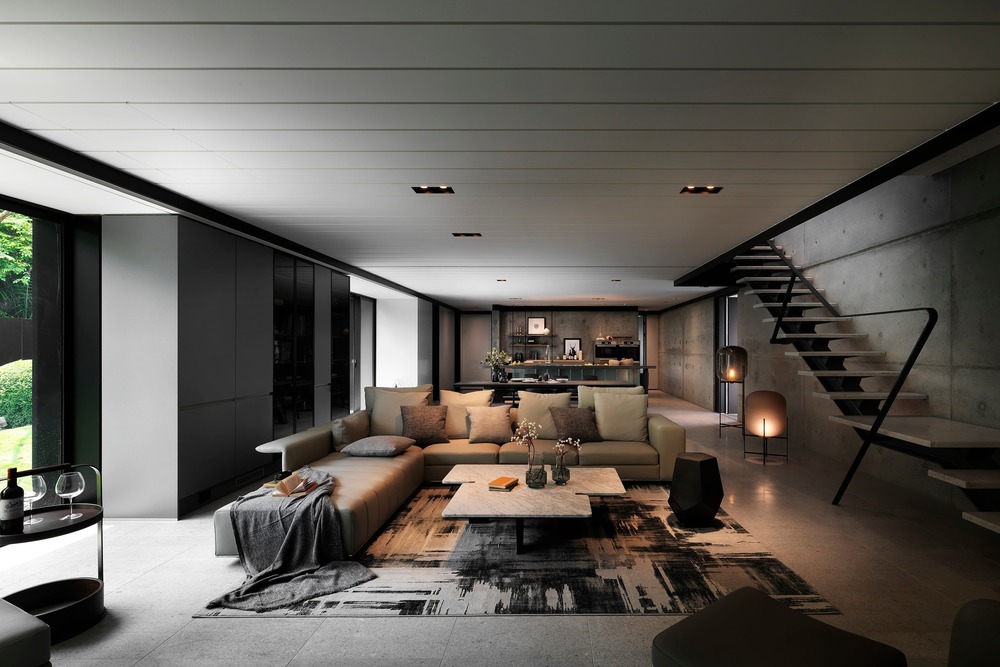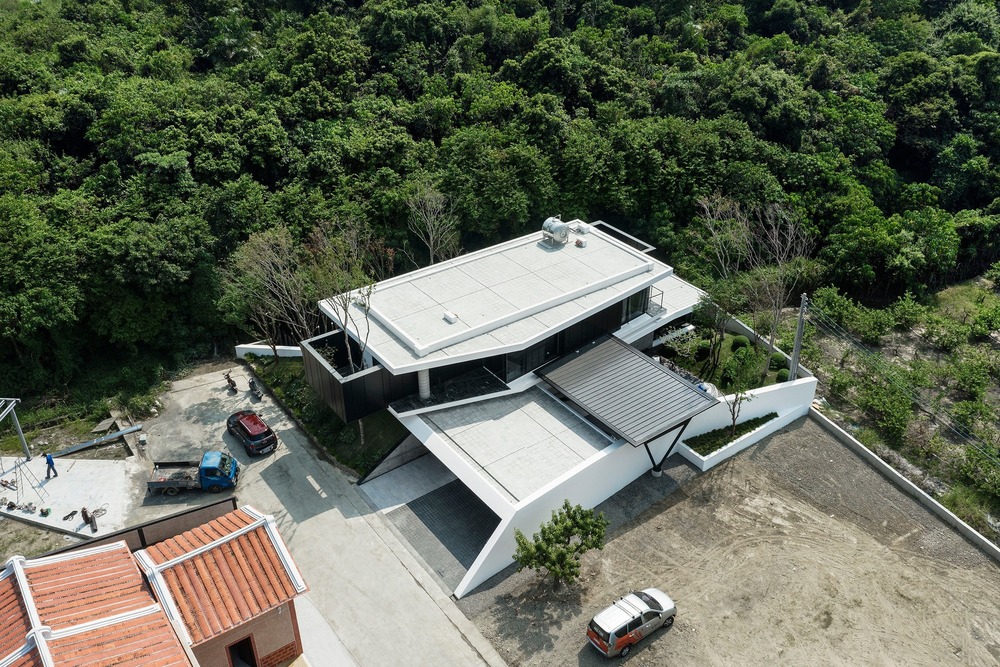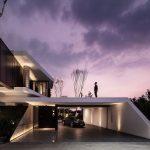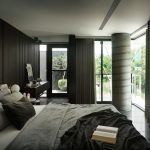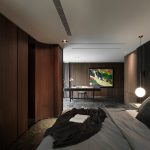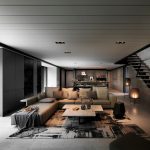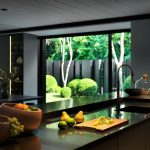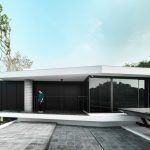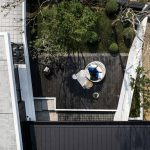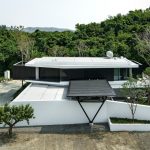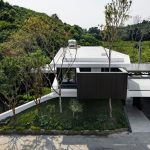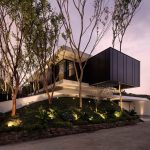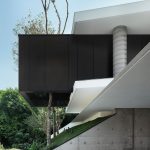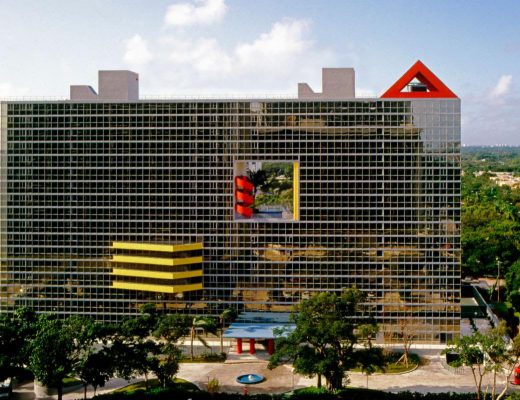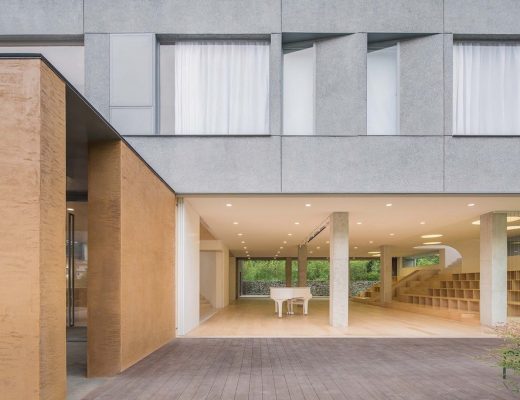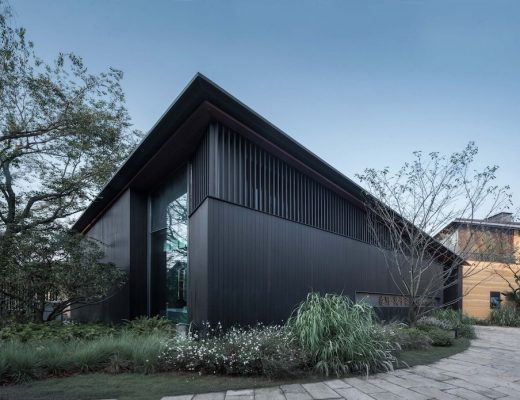Chain10 Architecture and Interior Design studio, led by architect Keng-Fu Lo, has designed a countryside house close to the low-density residential area of the Agongdian Reservoir in the mountains of Kaohsiung. At first glance, it looks like an orchard with lots of hills, but upon closer inspection, one will notice that there is a private 6-meter driveway that conceals the house from the main road.
A green slope was created under the suspended wall on the second floor of the main building facing the southward hilly land. The natural grassy slope in the courtyard echoes the greenness of the hillside slope. A number of Taiwanese beech trees were also planted to further enhance the greenery around the property. All of this allows the residents to easily view the change of seasons while creating a rare atmosphere that is impossible to achieve in a city-like environment.
With this project, the aim was to establish a strong connection between the house and the environment. Due to the location of the residence, it was known there would be numerous local wild animals and insect species. A typical project like this would usually cause a lot of disruption to their habitats. The size of the building also affects the combination of internal and external lighting. Its design minimises the effect of the internal artificial lighting. This lighting has been positioned in such a way that it doesn’t disturb the natural habitats and animals in the area.
To optimise the climate conditions, the typical south-westerly wind direction was a big consideration during the summer. This wind combined with the facade is why the building requires less usage of electricity to keep it cool. During winter, the hills block the cold wind. The direction combined with the suspended nature of the building means there is greater air circulation which benefits the residents during the hot Taiwanese summer.
The project is centered on the natural surroundings of the location. A large number of green trees were positioned around the building taking into the location of the property and attempting to address carbon neutrality. At the same time, this manages to create shade and filter the ambient air quality. The exterior of the building is made of breathable and environmentally-friendly paint with galvanised steel. The interior also reflects the same ethical and sustainable approach. Environmentally-friendly recycled materials have been extensively used so the structure is easily alterable. The reduced carbon emissions are expected to preserve more of the planet for the next generation.
The south-facing hilly green slopes situated in the courtyard extends the public space for the family. Over time, the movement of the trees creates light and shadow in the yard which brings a liveliness to the residents. Plenty of natural light enters the room through the large floor-to-ceiling windows, demonstrating the passive design approach behind its architecture.
See the full gallery here:
Photos: Moooten Studio / Qimin Wu
You might also like:
An experimental award-winning house in dense Taipei
Woha brings green, sustainable architecture to Taichung with its first Taiwan project
Radius Interior Design Studio creates skateboard-inspired cafe in Taipei


